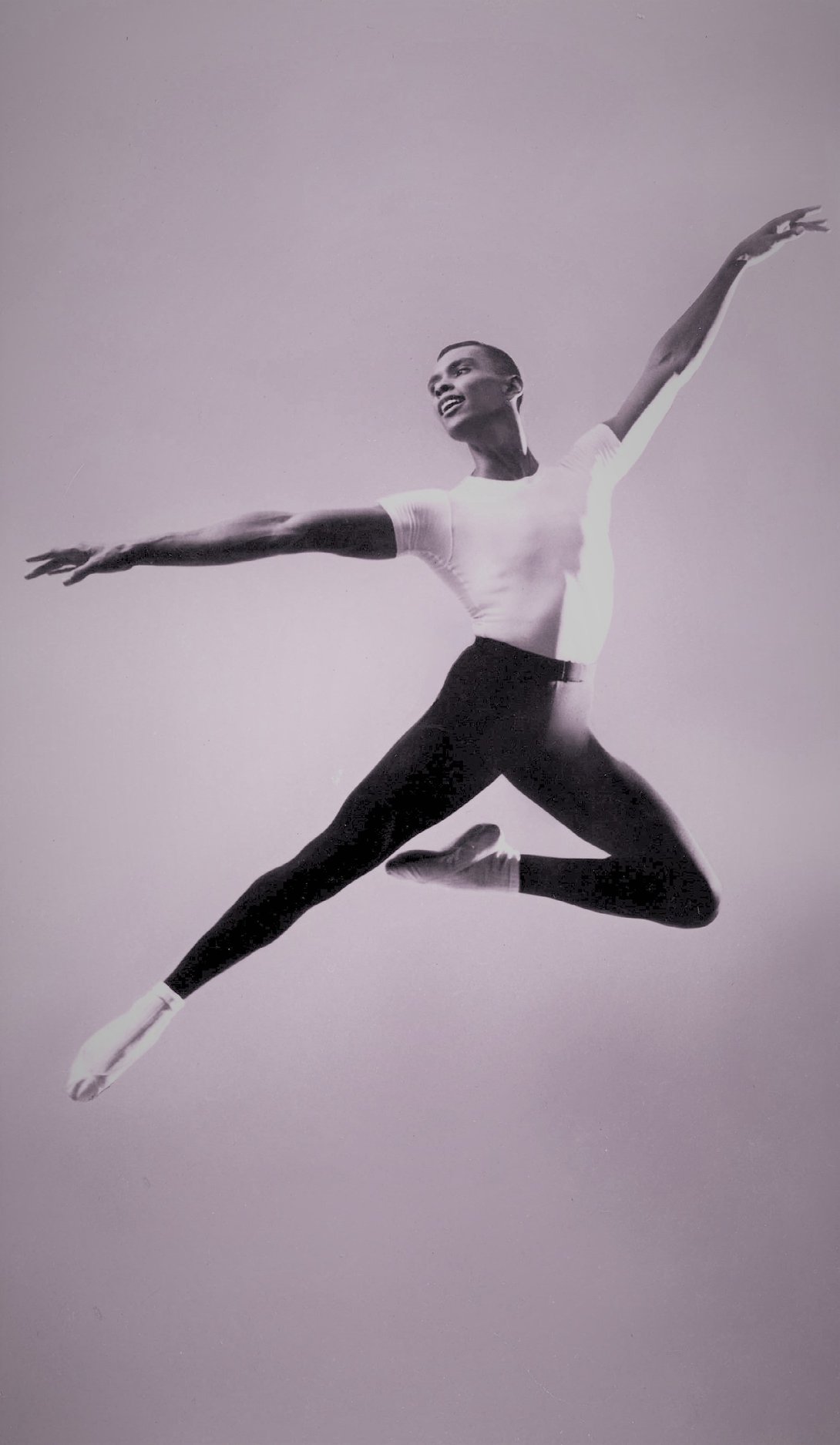Arthur Mitchell (born March 27, 1934) is an African-American dancer and choreographer who created a training school and the first African-American classical ballet company, Dance Theatre of Harlem. Among other awards, Mitchell has been recognized as a MacArthur Fellow, inducted into the National Museum of Dance’s Mr. & Mrs. Cornelius Vanderbilt Whitney Hall of Fame, and has received the United States National Medal of Arts and a Fletcher Foundation fellowship.
From New York, Mitchell attended the High School for the Performing Arts in New York City and began performing in Broadway musicals and with the companies of Donald McKayle and John Butler. In 1956 Mitchell became the only Black dancer in the New York City Ballet. He soon became a principal with the company, and George Balanchine created several roles for him, notably those in A Midsummer Night’s Dream (1962) and Agon (1967). Mitchell was sensitive to the prejudice against Blacks in the world of ballet and determined to form an all-Black ballet company. In 1968 he and Karel Shook founded an integrated school, whose associated company made its debut in 1971 in New York City and at the Spoleto Festival in Italy.
Mitchell choreographed a number of ballets for the Dance Theater of Harlem. In 1973 Arthur Mitchell and his company presented the prize-winning television special Rythmetron, choreographed by Mitchell himself in 1968. After two European tours and three National tours the company had their first full season in New York in 1974. In 1981 Dance Theater of Harlem performed at Covent Garden and in 1982 had their first season at the Metropolitan Opera, Lincoln Center, in New York. Arthur Mitchell’s 1984 Creole Giselle, set in 19th century Louisiana where Giselle is the favorite mistress of the plantation owner, was the first American ballet to win England’s Laurence Olivier Award for best new dance production.
Dance Theater of Harlem then toured Russia for five weeks in 1988 and segregated South Africa in 1992. Arthur Mitchell established the Dancing Through Barriers outreach program, an ongoing “traveling university” of lectures, classes and workshops for inner-city children in the U.S.A. and England. In 1993 Arthur Mitchell received the Kennedy Center Honors Award and was given Living Landmark status by the New York Landmark Conservancy. 1994 was a very difficult year for the company because it had to be downsized from 52 to 36 dancers because of lack of funds. Arthur Mitchell received the National Medal of Arts in 1995. In 1997 Mitchell’s own dancers went on strike demanding better wages.
In 1998 he was inducted into the National Museum of Dance’s Hall of Fame. In 2004 there was a temporary shutdown of the school and the company. The school is once again operational with over a thousand students enrolling every year but Mitchell still has plans and dreams for the future. He would like to have an International School of the Allied Arts. “I’d bring children from all over the world and call it Noah’s Art. I’d put together a company with these young people and tour the world to show that regardless of race, class, creed or color, it’s the quality of what you do that’s important. “Over the years Arthur Mitchell has received Honorary Doctorates from Harvard, Princeton and 11 other institutions. He is also featured in the 2004 documentary Balanchine. We can say that Arthur Mitchell has “done for ballet what Jackie Robinson did for baseball”.
In 2006, President Bush hosted a White House performance by and social dinner honoring the School of the Dance Theater of Harlem and it’s resident company. He also honored the outreach programs that the school has which give the opportunity to study dance to children all over the world.
Mitchell’s archives are to be held at Columbia University.
Arthur Mitchell

